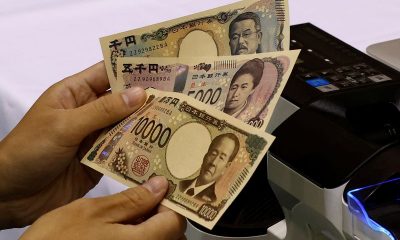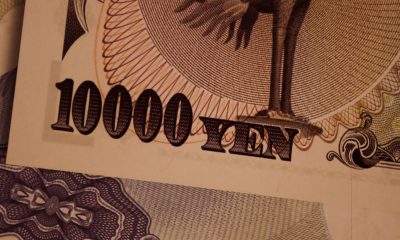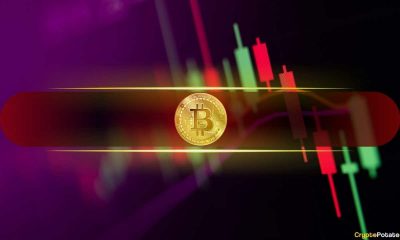Forex
Dollar falls, euro highest since August in thin holiday trading
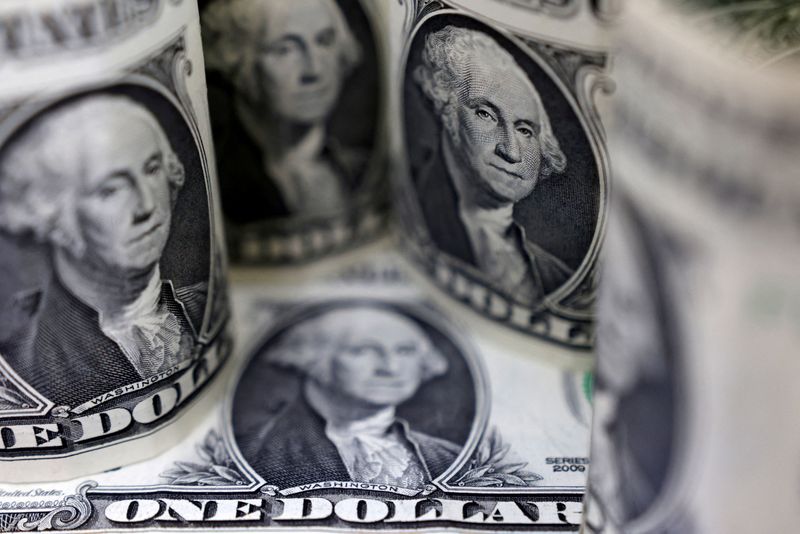
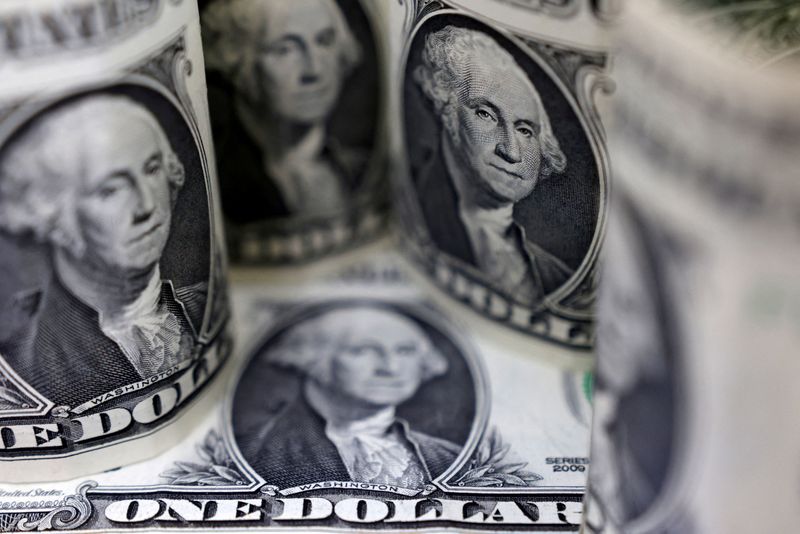
© Reuters. FILE PHOTO: U.S. Dollar banknotes are seen in this illustration taken July 17, 2022. REUTERS/Dado Ruvic/Illustration/File Photo
By Karen Brettell
NEW YORK (Reuters) -The fell on Tuesday and the euro hit a more than four-month high as investors waited on fresh clues to when the Federal Reserve is likely to begin cutting interest rates as inflation falls closer to the U.S. central bank’s 2% annual target.
Volumes were muted the day after Christmas, however, as markets in the UK, Australia, New Zealand and Hong Kong, among others, were still out for a public holiday. Many traders globally are also out for holidays until the New Year.
The greenback is on track to post its worst performance since 2020 against a basket of currencies as anticipation of Fed rate cuts dents the appeal of the U.S. currency relative to peers.
Many analysts expect the U.S. economy to markedly slow in 2024, but the Fed is also expected to act to ensure that the gap between the fed funds rate and realized inflation doesn’t widen too far.
If inflation falls much faster than the Fed’s benchmark rate it can tighten monetary conditions more than Fed policymakers intend and increase the risk of a hard economic landing.
“Inflation should continue to cool, which will afford policymakers the ability to trim rates by June in order to prevent passive tightening in real rates,” analysts at Action Economics noted in a report on Tuesday.
However they pushed back against a cut coming as soon as March and disagreed with market pricing of 154 bps in easing by December, noting that this is “unlikely to be necessary unless the economy were to fall into a recession in coming months.”
Data on Friday showed U.S. prices fell in November for the first in more than 3-1/2 years, pushing the annual increase in inflation further below 3%.
Annual home prices in October rose again, pointing toward continued recovery of the housing market, data on Tuesday showed. Separately a Mastercard (NYSE:) report showed U.S. retail sales rose 3.1% between Nov. 1 and Dec. 24 as shoppers looked for last-minute Christmas deals amid big promotions.
The dollar index was last down 0.18% on the day at 101.44. It has fallen from a 20-year high of 114.78 on Sept. 28 2022 and is pace for a yearly loss of 1.98%.
The euro was up 0.20% at $1.1045, the highest since Aug. 10. The single currency has risen from a 20-year low of $0.9528 on Sept. 26, 2022 and is on track for a 3.08% gain this year.
The dollar gained 0.06% against the yen to 142.47. The dollar reached a 32-year high of 151.94 yen on Oct. 24, 2022, and came close to reaching this level again last month, before the Japanese currency recovered. The dollar is on pace for a 8.68% gain this year.
The yen has steadied near a recent five-month peak on the view that the Bank of Japan (BOJ) could soon mark an end to its ultra-easy policy. For most of 2022 and 2023, the policy has kept the Japanese currency under pressure as other major central banks embarked on aggressive rate-hike cycles.
BOJ Governor Kazuo Ueda said on Monday the likelihood of achieving the central bank’s inflation target was “gradually rising” and it would consider changing policy if prospects of sustainably achieving the 2% target increase “sufficiently”.
In cryptocurrencies, fell 3.36% to $42,130.
========================================================
Currency bid prices at 3:00PM (2000 GMT)
Description RIC Last U.S. Close Pct Change YTD Pct High Bid Low Bid
Previous Change
Session
Dollar index 101.4400 101.6400 -0.18% -1.981% +101.7700 +101.4500
Euro/Dollar $1.1045 $1.1015 +0.20% +3.08% +$1.1045 +$1.1010
Dollar/Yen 142.4700 142.4050 +0.06% +8.68% +142.6250 +142.0900
Euro/Yen 157.35 156.85 +0.32% +12.15% +157.3600 +156.5900
Dollar/Swiss 0.8532 0.8555 -0.27% -7.73% +0.8579 +0.8532
Sterling/Dollar $1.2722 $1.2699 +0.10% +5.16% +$1.2723 +$1.2689
Dollar/Canadian 1.3203 1.3268 -0.41% -2.56% +1.3262 +1.3202
Aussie/Dollar $0.6824 $0.6799 +0.24% +0.12% +$0.6824 +$0.6799
Euro/Swiss 0.9422 0.9423 -0.01% -4.78% +0.9448 +0.9419
Euro/Sterling 0.8679 0.8672 +0.08% -1.87% +0.8686 +0.8669
NZ $0.6331 $0.6298 +0.36% -0.29% +$0.6332 +$0.6295
Dollar/Dollar
Dollar/Norway 10.1360 10.2120 -0.57% +3.46% +10.2710 +10.1540
Euro/Norway 11.1980 11.2303 -0.29% +6.71% +11.3130 +11.2010
Dollar/Sweden 9.9919 10.0179 +0.17% -4.00% +10.0734 +9.9848
Euro/Sweden 11.0360 11.0175 +0.17% -1.02% +11.0935 +11.0100
Forex
Asia FX weak ahead of US inflation; yen dips as BOJ gives little support
Investing.com– Most Asian currencies weakened on Friday, while the dollar steadied in anticipation of key inflation data that is expected to factor into the Federal Reserve’s stance on interest rate cuts.
While an overnight drop in the dollar- following weaker-than-expected U.S. gross domestic product data- offered some relief to Asian units, this was largely offset by persistent bets on higher-for-longer U.S. interest rates. The dollar also trimmed some of its losses in Asian trade.
Japanese yen weakens, USDJPY crosses 156 after BOJ
The Japanese yen was an underperformer, with the pair rising past 156 to new 34-year highs after comments from the Bank of Japan sparked doubts over just how much capacity the central bank had to raise interest rates further.
The BOJ after a historic hike in March. The central bank also forecast higher inflation in the coming years.
But the BOJ also , raising doubts over just how much capacity it would have to keep raising interest rates. This presented a largely dovish outlook for the yen.
Softer-than-expected – released earlier on Friday- further sparked doubts over a hawkish BOJ.
Still, losses in the yen were limited by continued fears of government intervention in currency markets. An upcoming press conference with BOJ Governor , at 02:30 ET (06:30 GMT) also presented the possibility of more hawkish signals.
Broader Asian currencies also weakened on Friday, amid persistent fears of higher-for-longer U.S. interest rates. The Chinese yuan’s pair rose slightly and remained close to recent five-month highs.
remove ads
.
South Korea’s pair rose 0.4%, while the Singapore dollar’s pair added 0.1%.
The Australian dollar’s pair was supported by strong inflation data, which, coupled with higher earlier this week, sparked bets on higher-for-longer rates in the country.
The Indian rupee’s pair moved little, with traders growing wary of more volatility in Indian markets as the 2024 general elections began.
Dollar steadies with PCE inflation on tap
The and rose marginally in Asian trade, recovering some overnight losses.
showed growth in the U.S. economy cooled more than expected in the first quarter, amid sticky inflation and high rates.
But inflation remained uncomfortably high, with the growing more than expected.
This put upcoming data squarely in focus. The reading is the Federal Reserve’s preferred inflation gauge.
Despite Thursday’s weak GDP reading, traders were seen steadily pricing out expectations for any near-term rate cuts by the Fed. The now shows traders pricing in rate cuts only by September, or the fourth quarter.
Forex
Explainer-What would Japanese intervention to boost a weak yen look like?

By Leika Kihara
TOKYO (Reuters) -Japanese authorities are facing renewed pressure to combat a sustained depreciation in the yen, as traders drive down the currency on expectations that any further interest rate hikes by the central bank will be slow in forthcoming.
Below are details on how yen-buying intervention works:
LAST CONFIRMED YEN-BUYING INTERVENTION?
Japan bought yen in September 2022, its first foray in the market to boost its currency since 1998, after a Bank of Japan (BOJ) decision to maintain its ultra-loose monetary policy drove the yen as low as 145 per dollar. It intervened again in October after the yen plunged to a 32-year low of 151.94.
WHY STEP IN?
Yen-buying intervention is rare. Far more often the Ministry of Finance has sold yen to prevent its rise from hurting the export-reliant economy by making Japanese goods less competitive overseas.
But yen weakness is now seen as problematic, with Japanese firms having shifted production overseas and the economy heavily reliant on imports for goods ranging from fuel and raw materials to machinery parts.
WHAT HAPPENS FIRST?
When Japanese authorities escalate their verbal warnings to say they “stand ready to act decisively” against speculative moves, that is a sign intervention may be imminent.
Rate checking by the BOJ – when central bank officials call dealers and ask for buying or selling rates for the yen – is seen by traders as a possible precursor to intervention.
WHAT HAPPENED SO FAR?
Finance Minister Shunichi Suzuki told reporters on March 27 that authorities could take “decisive steps” against yen weakness – language he hasn’t used since the 2022 intervention.
remove ads
.
Hours later, Japanese authorities held an emergency meeting to discuss the weak yen. The meeting is usually held as a symbolic gesture to markets that authorities are concerned about rapid currency moves.
After the warnings failed to arrest the yen’s fall, South Korea and Japan won acknowledgement from the United States over their “serious concerns” about their currencies’ declines in a trilateral meeting held in Washington last week.
The market impact of the agreement did not last long. The dollar continued its ascent and notched a 34-year high of 155.74 yen on Thursday, driving past the 155 level seen as authorities’ line in the sand for intervention.
NEXT LINE IN THE SAND?
Authorities say they look at the speed of yen falls, rather than levels, and whether the moves are driven by speculators, to determine whether to step into the currency market.
While the dollar has moved above the psychologically important 155 level, the recent rise has been gradual and driven mostly by U.S.-Japanese interest rate differentials. That may make it hard for Japan to argue that recent yen falls are out of line with fundamentals and warrant intervention.
Some market players bet Japanese authorities’ next line in the sand could be 160. Ruling party executive Takao Ochi told Reuters the yen’s slide towards 160 or 170 to the dollar could prod policymakers to act.
WHAT’S THE TRIGGER?
The decision is highly political. When public anger over the weak yen and a subsequent rise in the cost of living is high, that puts pressure on the administration to respond. This was the case when Tokyo intervened in 2022.
remove ads
.
Prime Minister Fumio Kishida may feel the need to prevent further yen falls from pushing up the cost of living with his approval ratings faltering ahead of a ruling party leadership race in September.
But the decision would not be easy. Intervention is costly and could easily fail, given that even a large burst of yen buying would pale next to the $7.5 trillion that change hands daily in the foreign exchange market.
HOW WOULD IT WORK?
When Japan intervenes to stem yen rises, the Ministry of Finance issues short-term bills, raising yen it then sells to weaken the Japanese currency.
To support the yen, however, the authorities must tap Japan’s foreign reserves for dollars to sell for yen.
In either case, the finance minister issues the order to intervene and the BOJ executes the order as the ministry’s agent.
CHALLENGES?
Japanese authorities consider it important to seek the support of Group of Seven partners, notably the United States if the intervention involves the dollar.
Washington gave tacit approval when Japan intervened in 2022, reflecting recent close bilateral relations.
Finance Minister Suzuki said last week’s meeting with his U.S. and South Korean counterparts laid the groundwork to act against excessive yen moves, a sign Tokyo saw the meeting as informal consent by Washington to intervene as needed.
U.S. Treasury Secretary Janet Yellen said currency interventions should occur only in “very rare and exceptional circumstances,” when markets are disorderly with excessive volatility. She declined to comment on the yen’s value.
A looming U.S. presidential election may complicate Japan’s decision on whether and when to intervene.
remove ads
.
In a social media post on Tuesday, Republican presidential candidate Donald Trump decried the yen’s historic slide against the dollar, calling it a “total disaster” for the United States.
There is no guarantee intervention will effectively shift the weak-yen tide, which is driven largely by expectations of prolonged low interest rates in Japan. BOJ Governor Kazuo Ueda has dropped hints of another rate hike but stressed that the bank will tread cautiously given Japan’s fragile economy.
Forex
Dollar sags after mixed US growth and inflation report, except against yen

By Alden Bentley and Gertrude Chavez-Dreyfuss
NEW YORK (Reuters) -The U.S. dollar fell on Thursday, except against the yen, vacillating after data showed unexpected slowing in economic growth and an unwelcome inflation acceleration, potentially tying the Federal Reserve’s hands on a pivot to easier interest rates.
While the dollar was hardly shaken against the beleaguered yen, it otherwise only popped briefly after the Commerce Department reported that U.S. gross domestic product grew at a 1.6% annualized rate in the January-March period, slower than the 2.4% rate expected by economists polled by Reuters.
The report also showed that underlying inflation as measured by the core personal consumption expenditures (PCE) price index rose 3.7% in the first quarter, eclipsing forecasts for a 3.4% rise.
The inflation surprise puts an even greater-than-usual focus on the release on Friday of PCE price index data for March. The PCE index, and core PCE index factoring out food and energy prices are among the Fed’s most important gauges of price behavior. Inflation remains stubbornly above the U.S. central bank’s 2% inflation target.
“The market reaction to the (GDP) data tells all you need to know about what investors are focused on and it’s mostly inflation and not growth,” said Boris Kovacevic, global market strategist at Convera in Vienna, Austria.
“The print on the 3.7% PCE does suggest that tomorrow’s PCE number will be higher.”
The yen, meanwhile, hit a fresh 34-year low versus the dollar and a 16-year low against the euro on Thursday as investors expect a Bank of Japan (BOJ) policy meeting that ends on Friday to not be hawkish enough to support the Japanese currency.
remove ads
.
The , a measure of the U.S. currency’s value against six rivals, reversed a small overnight loss after the data caused benchmark Treasury yields to rise, topping at 106.00. It was last at 105.60, off 0.21%.
Conversely, the greenback fell as low as 155.31 yen after the GDP data, but quickly reversed to stand 0.19% higher at 155.63.
It peaked at a 34-year high of 155.75 yen, while the euro/yen pairing surged to 167.025, a 16-year peak.
Investors guessed the dollar/yen 155 level would be a line in the sand for Japanese authorities, above which the BOJ could intervene to shore up the currency. But it’s a moving target and the market has been on high alert for such central bank action since the yen fell below 152 per dollar about two weeks ago.
“I think that Japanese officials have been very clear that they are not really looking at a particular level,” said Marc Chandler chief market strategist, at Bannockburn Global Forex in New York.
“We should expect a hawkish hold from the BOJ where they hold policy and they talk about how the weakness of the yen could contribute to inflation and which they’d respond to.”
The euro went up 0.26% to $1.0725. Sterling strengthened 0.35% to $1.2504.
Following the GDP data, the U.S. rate futures market was pricing in a 58% chance of a Fed rate cut in September, down from 70% late on Wednesday, according to CME Group’s (NASDAQ:) FedWatch tool.
Rate futures traders on Thursday were factoring in a 68% chance that the Fed’s first rate cut since 2020 could happen at its meeting in November.
remove ads
.
“The inflation figures … potentially even point to the need for a further tightening,” said Stuart Cole, chief macro economist, at Equiti Capital in London. “We know that returning CPI (consumer price index) to target is the Fed’s main objective and therefore, on balance, today’s figure probably pushes an interest rate cut further down the road.”
In cryptocurrencies, bitcoin gained 0.80% at $64,492.00. rose 0.94% at $3158.95.

 Forex2 years ago
Forex2 years agoForex Today: the dollar is gaining strength amid gloomy sentiment at the start of the Fed’s week

 Forex2 years ago
Forex2 years agoHow is the Australian dollar doing today?

 Forex1 year ago
Forex1 year agoUnbiased review of Pocket Option broker

 Forex2 years ago
Forex2 years agoDollar to pound sterling exchange rate today: Pound plummeted to its lowest since 1985

 Cryptocurrency2 years ago
Cryptocurrency2 years agoWhat happened in the crypto market – current events today

 World2 years ago
World2 years agoWhy are modern video games an art form?

 Stock Markets2 years ago
Stock Markets2 years agoMorgan Stanley: bear market rally to continue

 Economy2 years ago
Economy2 years agoCrude oil tankers double in price due to EU anti-Russian sanctions

